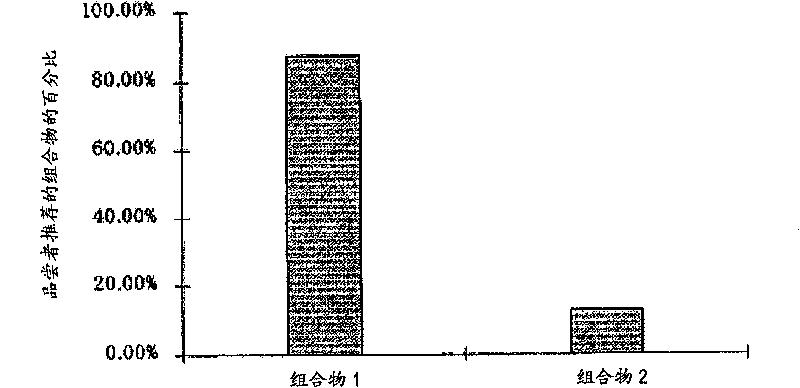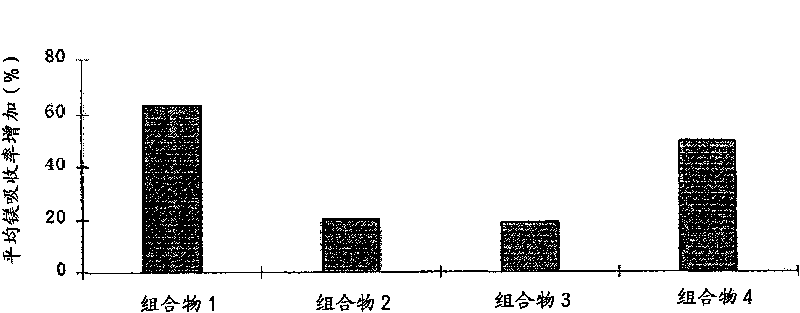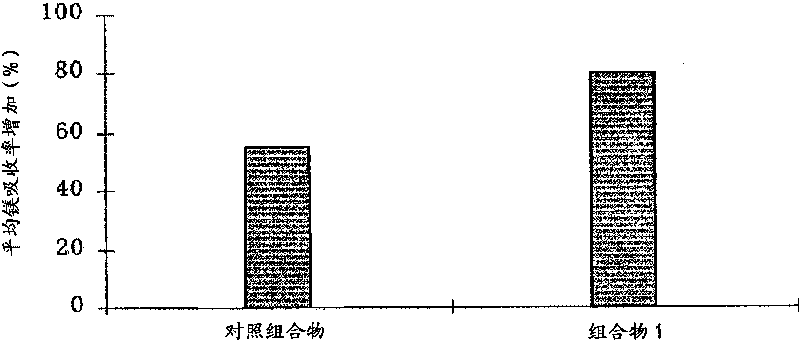Magnesium compositions and uses thereof
A composition and technology of magnesium compounds, applied in the field of oral dosage forms containing magnesium, in the field of preparation of food supplements, can solve the problems of insolubility, difficult delivery and the like
- Summary
- Abstract
- Description
- Claims
- Application Information
AI Technical Summary
Problems solved by technology
Method used
Image
Examples
preparation example Construction
[0165] The preparation of the pharmaceutical compositions of the present invention is carried out according to generally accepted procedures for the manufacture of pharmaceutical formulations. See, eg, Remington's Pharmaceutical Sciences 18th Edition (1990), edited by E.W. Martin, Mack Publishing Co., PA. Depending on the intended use and mode of administration, it may be necessary to further manipulate the magnesium-counter ion compound in the preparation of the pharmaceutical composition. Proper processing may include admixing with suitable nontoxic and noninterfering ingredients, sterilization, subdividing into dosage units and packaging in a delivery device.
[0166] Pharmaceutical compositions for buccal, intranasal or topical administration may be presented in solid, semi-solid or liquid form, including tablets, capsules, powders, liquids and suspensions. Compositions for injection can be presented as liquid solutions or suspensions, as emulsions, or as solid forms suit...
Embodiment 1
[0202] Embodiment 1: the preparation of magnesium threonate
[0203] According to the procedure described by Wei et al., J.Org.Chem.50, 3462-3467 (1985), first, 264 g (1.5 moles) of vitamin C, 300 g (3 moles) of calcium carbonate and 600 mL of 30 volume % H 2 o 2 Preparation of calcium threonate. The prepared calcium threonate was redissolved in ~3 L of water at ~90°C. The resulting solution was cooled to ~50°C and then poured into a 3 inch diameter column filled with ~3 L of clean Amberlite IR-120 strong acid resin while the column was continuously eluted with water. Fractions containing threonic acid having a pH below about 4.5 were collected. The threonic acid fractions (~7 to ~8 L) were combined and stirred at ~50 to ~60°C. Add Mg(OH) to threonic acid in small amounts 2 powder until the pH reaches 7. The resulting solution was filtered and concentrated by rotary evaporation at ~50 °C to a final volume of ~700 to ~800 mL. The concentrated solution was cooled to roo...
Embodiment 2
[0204] Embodiment 2: taste comparison
[0205] In a double-blind test, each of 16 volunteers, 9 men and 7 women, aged 20-22 years, was given 1 glass containing 50% by weight of magnesium gluconate, 25% by weight of magnesium lactate and 25% by weight of magnesium lactate. % of the composition of skim milk of a mixture of magnesium citrate (composition 1), which has a total concentration of elemental magnesium associated with the mixture of 50 mM; and 1 glass of the composition of skim milk and magnesium gluconate (composition 2 ) with a total concentration of elemental magnesium related to magnesium gluconate at a concentration of 50 mM. Each volunteer was asked to taste both compositions and state his or her preference for one or the other or neither. like figure 1 As shown, most subjects (87.5%) preferred Composition 1 and a minority (12.5%) preferred Composition 2.
PUM
| Property | Measurement | Unit |
|---|---|---|
| volume | aaaaa | aaaaa |
| volume | aaaaa | aaaaa |
Abstract
Description
Claims
Application Information
 Login to View More
Login to View More - R&D
- Intellectual Property
- Life Sciences
- Materials
- Tech Scout
- Unparalleled Data Quality
- Higher Quality Content
- 60% Fewer Hallucinations
Browse by: Latest US Patents, China's latest patents, Technical Efficacy Thesaurus, Application Domain, Technology Topic, Popular Technical Reports.
© 2025 PatSnap. All rights reserved.Legal|Privacy policy|Modern Slavery Act Transparency Statement|Sitemap|About US| Contact US: help@patsnap.com



